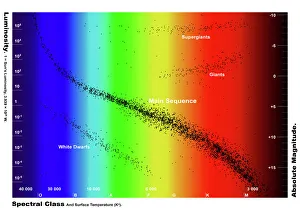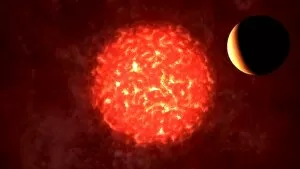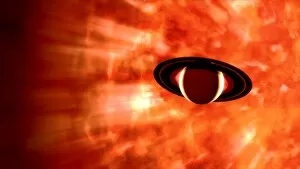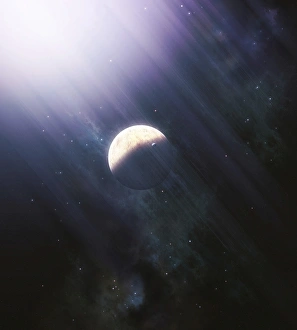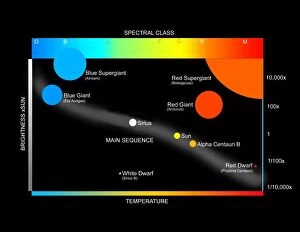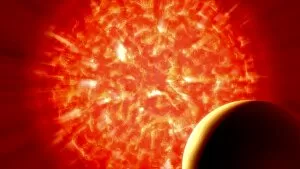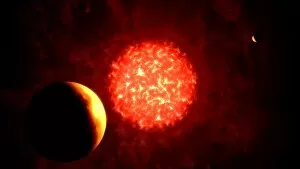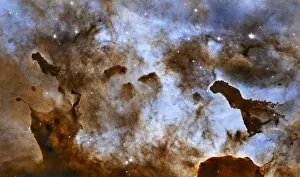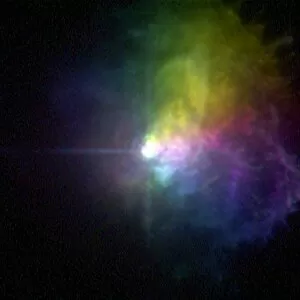Hypergiant Collection
"Exploring the Enigma of Hypergiants: Unveiling the Giants of the Cosmos" A captivating diagram reveals the mesmerizing spectral class and luminosity of stars
All Professionally Made to Order for Quick Shipping
"Exploring the Enigma of Hypergiants: Unveiling the Giants of the Cosmos" A captivating diagram reveals the mesmerizing spectral class and luminosity of stars, showcasing their diverse and awe-inspiring nature. Comparing our humble Sun to VY Canis Majoris, a hypergiant star, we witness an astonishing disparity in size that leaves us humbled by the vastness of our universe. Gazing from Neptune's distant realm, imagine a breathtaking view where VY Canis Majoris replaces our Sun, illuminating the icy planet with its colossal brilliance. In Saturn's domain, envision a celestial spectacle as VY Canis Majoris takes center stage instead of our familiar Sun, casting its radiant glow upon Saturn's majestic rings. Amidst vibrant blue rays emanating from a lonely planet and its moon suspended in space, we are reminded of the ethereal beauty that lies within these immense stellar giants. Delving into stellar classification through a simplified Herzprung-Russell Diagram unveils how scientists categorize stars based on their characteristics and evolutionary stages. From Uranus' vantage point emerges an extraordinary vision – if VY Canis Majoris replaced our Sun – transforming this distant planet into an alien world bathed in unimaginable radiance. Witnessing a mind-boggling comparison between hypergiant stars and our entire solar system emphasizes just how minuscule we truly are in comparison to these cosmic behemoths. With bated breath, observe an artist's rendering capturing the implosion of a dying sun surrounded by its orbiting planets; reminding us of both fragility and grandeur within the cosmos. Peering outwards from Pluto's frigid expanse towards VY Canis Majoris replacing our modest Sun unravels yet another perspective on how small we are amidst such astronomical wonders.

